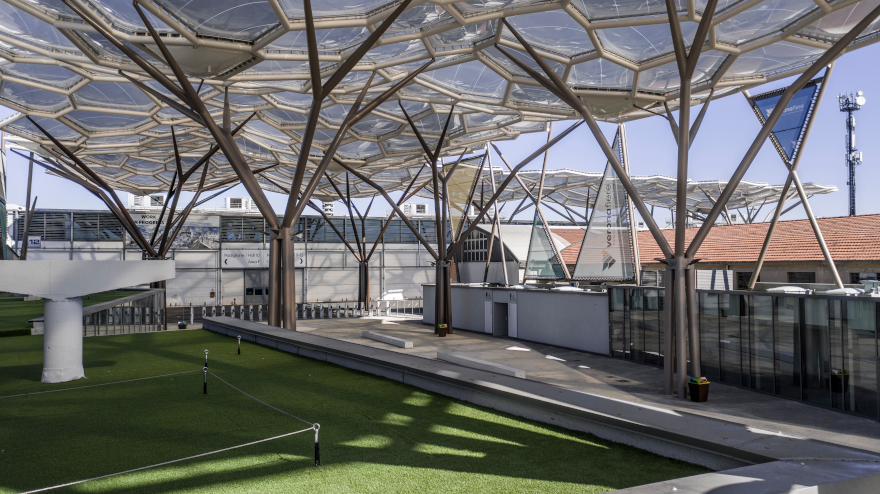In the ever-evolving landscape of modern construction, steel structure building has emerged as the backbone of architectural innovation, offering unparalleled strength and versatility that traditional materials simply cannot match. The skeletal frameworks that rise from our urban centres—gleaming, precise, and powerful—represent not merely buildings, but profound statements about our relationship with space, sustainability, and time itself.
The Hidden Language of Steel
The buildings we construct speak volumes about our values, our aspirations, and our understanding of permanence. Steel structures whisper a particular truth: that resilience need not come at the cost of adaptability. Unlike the monolithic concrete structures of previous eras, steel-framed buildings possess a certain lightness, a capacity for transformation that seems almost contradictory to their immense strength.
In Singapore, where land comes at a premium and the tropical climate presents unique challenges, steel structures have become particularly eloquent. As one prominent Singapore architect noted: “Steel allows us to speak the language of space differently—to create volume without visual weight, to dance with gravity rather than simply resist it.”
Why Steel Stands Apart
The Technical Advantages
The preference for steel in modern construction isn’t merely aesthetic—it’s rooted in tangible, measurable benefits:
- Exceptional strength-to-weight ratio, allowing for longer spans and more open interiors
- Dimensional stability across temperature changes and over time
- Precision manufacturing that reduces on-site errors and waste
- Non-combustible properties that enhance fire safety
- Recyclability that far exceeds other construction materials
Perhaps most significantly, steel structures can be assembled with remarkable speed. The components arrive ready for installation, having been fabricated with millimetre precision in controlled factory environments. This reduces construction timelines dramatically, allowing projects to reach completion sometimes months ahead of conventional methods.
The Environmental Paradox
Steel’s Surprising Sustainability Credentials
There exists a curious paradox in steel construction. While the production of steel is energy-intensive, the longevity and recyclability of steel buildings offer environmental advantages that often go unrecognised.
“When we calculate the true environmental cost,” says a Singapore environmental consultant, “we must consider the entire lifecycle of the building. Steel structures can be disassembled rather than demolished, with nearly 100% of the structural elements recycled without degradation of quality.”
This capacity for rebirth stands in stark contrast to concrete, which, once demolished, can rarely be repurposed for structural applications. The steel beams supporting an office building today might, decades hence, become part of a bridge, a stadium, or another building entirely—continuing their useful life through metamorphosis rather than ending it in landfill.
The Aesthetic Revolution
Breaking Free from Industrial Associations
For generations, exposed steel was associated primarily with industrial settings—factories, warehouses, and utilitarian structures where appearance took a back seat to function. That perception has undergone a remarkable transformation.
Today’s architects celebrate steel’s inherent qualities, allowing structural elements to become central aesthetic features. The precise lines, the honest expression of forces, and the delicate balance between strength and visual lightness have created a new vocabulary of architectural expression.
The tropical context of Singapore has further refined this language, with steel structures designed to create shade, channel breezes, and establish a dialogue with the lush natural environment. “Steel allows us to create buildings that breathe,” notes a Singapore design critic, “permeable structures that filter rather than block, that respond to rather than resist the climate.”
The Human Experience
Living and Working Within Steel Frames
Beyond the technical and environmental considerations lies perhaps the most important aspect of any building—how it shapes human experience. Steel structures, with their ability to span great distances without intermediate supports, create interior spaces of remarkable openness and flexibility.
The absence of numerous load-bearing walls allows interior layouts to evolve over time, adapting to changing needs without major structural interventions. This inherent adaptability extends the functional lifespan of buildings, allowing them to remain relevant as usage patterns shift across decades.
Economic Implications of Steel Innovation
The Financial Case for Forward Thinking
The economic narrative of steel construction extends beyond mere construction costs. While the initial investment may sometimes exceed traditional methods, the long-term financial benefits create a compelling case for steel. Faster construction translates directly to earlier occupancy and revenue generation. The precision of prefabricated components reduces costly on-site modifications and material waste. Perhaps most significantly, the inherent flexibility of steel structures means fewer costly renovations over a building’s lifetime.
In rapidly developing urban centres, time equals not just money but opportunity. “The speed advantage of steel construction can be the difference between capturing or missing market cycles,” observes a Singapore property analyst. “In volatile markets, delivering six months earlier can dramatically improve returns on investment.”
Looking Forward
As cities continue to densify and climate considerations become increasingly urgent, the versatility and efficiency of steel structures position them at the forefront of sustainable urban development. The marriage of strength and adaptability they offer isn’t merely a technical achievement—it represents a fundamental reimagining of what buildings can be.
In Singapore and beyond, the skylines of tomorrow will continue to be shaped by the elegant efficiency of steel, with each new project building upon the lessons of those that came before. As we face the challenges of building for an uncertain future, the time-tested resilience and endless adaptability of steel structure building offers not just practical solutions, but a philosophy of construction that celebrates both permanence and change.

